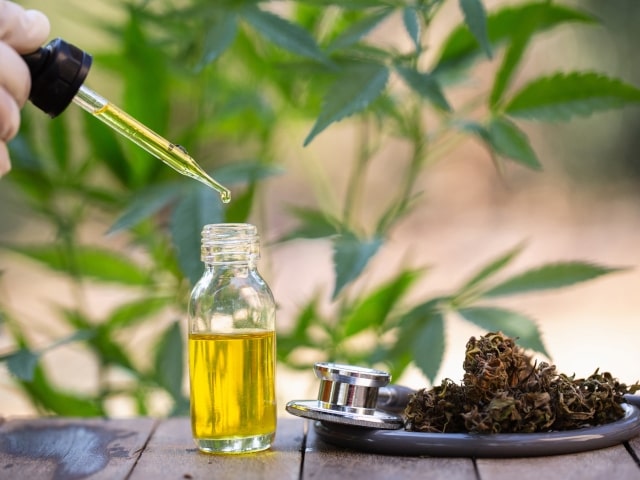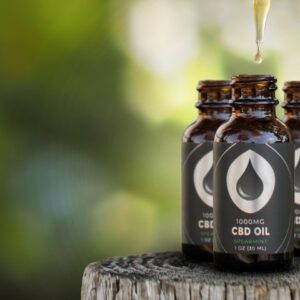OVERVIEW
- CBD (or cannabidiol) is a compound found in relative abundance in the hemp plant (Hemp sativa).It has been shown to help manage a variety of health conditions, including anxiety, inflammation, insomnia and chronic pain.
- CBD is non-intoxicating, meaning it will not make the user “high” and therefore is not addictive and can be legally consumed in the UK.
For centuries, Hempsativa (the plant better known as hemp) has been considered a botanical powerhouse for its medicinal properties. Despite being somewhat neglected in the modern medicinal era, recent years have seen a resurgence of interest in the plant and its therapeutic potential.
Hemp’s popularity as a natural remedy for various health conditions is due to the more than 80 compounds found within the plant, including a phytocannabinoid known as cannabidiol or CBD.
In recent years, intensive research has been conducted to explore the potential of CBD in terms of health management, and its use has grown at a staggering rate. Currently, there are almost 1.6 million people using hemp in the UK, and this number continues to grow.
So what exactly is CBD? Here’s our complete beginner’s guide to the world of CBD: we’ll explain what it is, where it comes from, what it’s used for, and some other facts you may not be familiar with.
WHAT IS CBD?
As mentioned above, CBD is short for cannabidiol, a non-intoxicating plant compound found in relative abundance in hemp. CBD is the main active ingredient in hemp-based products, including oils, tinctures, edibles (capsules, gummies), topicals, skin care products, and many more.
But how does CBD interact with our bodies? Well, it works its “magic” through an intricate network of cannabidiol receptors that, along with certain enzymes, form the endocannabinoid system (ECS). CB1 cannabinoid receptors are found primarily in the brain and central nervous system (CNS), while CB2 receptors are present primarily in the immune system.
Once this vast inherent system of receptors is stimulated, they help the body manufacture chemicals called endocannabinoids, which play a key role in regulating daily life functions such as mood, sleep, and appetite.
Understanding how CBD affects the body can help you understand how it can fit into a potential wellness regimen. However, before we get into its possible uses and effects, let’s find out where CBD comes from.
THE HISTORY OF CBD
Hemp is believed to have arrived in Europe around 1200 B.C. before it subsequently spread throughout the world. Even back then, the plant was primarily exploited for its medicinal benefits, with home remedies and primitive medicines using various parts of the hemp plant to control complications during childbirth, convulsions, dysentery, arthritis, rheumatism, and even insomnia.
The compound CBD was initially discovered in the 1940s, although scientists at the time were more interested in another hemp phytocannabinoid known as THC, which we will discuss later in the article. In 1946, Dr. Walter S. Loewe conducted the first tests of CBD on laboratory animals, concluding that CBD did not alter their mental state.
That same year, a research team led by Professor Raphael Mechoulam (commonly recognized as the grandfather of hemp research) discovered the endocannabinoid system (ECS) and the three-dimensional structure of CBD, two discoveries that would bring CBD into the spotlight and transform our understanding of hemp.

Eventually, British pharmacologists launched the first CBD oil intended for therapeutic uses. Thereafter, research into the potential health benefits of CBD continued to gain momentum around the world. In 2007, hemp cultivation licenses were granted to two farmers in North Dakota.
In 2014, U.S. President Barack Obama signed the “Farm Bill,” authorizing research institutes to begin testing hemp cultivation programs.
A subsequent amendment to the Farm Bill in 2018 completely separated CBD and hemp from the scheduled drugs prohibited by the Controlled Substances Act, meaning that hemp-derived CBD could no longer be treated as an illegal drug. In the same year, the U.S. Food and Drug Administration (FDA) approved the first oral medication for hemp-derived CBD. (FDA) approved the first oral cannabidiol (CBD) drug, Epidiolex, for the treatment of seizures in patients with epilepsy aged 2 years or older.
Today, hemp is used with fervor in pharmaceuticals, therapeutics, cosmetics, and even weight loss regimens.
Please take a moment to visit their page to get more useful information about the best products for arthritis.





